Shadow Word: Shadow Priest history heading into Legion
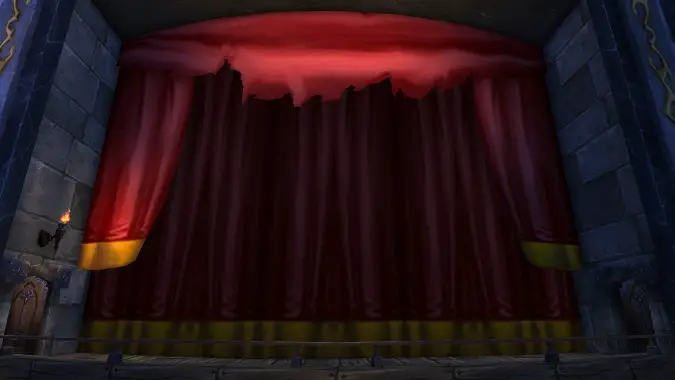
Ladies and gentleman, please join us tonight as we witness the harrowing tale of Shadow Priests throughout the years. It is a tale of rejection, (blood)lust, loss, gain, more loss, and so much more! Now please, take your seats. Sit back, relax, and enjoy the show!
Act I: The Face Melter
Shadow arrives on stage, takes place among PVPers.
Shadow Priests came from humble beginnings, starting off as a much simpler version of the class we know and love today. Mind Flay existed as a talent that wasn’t earned until level 20, followed by Vampiric Embrace at level 30, and Shadowform at level 40. Hitting level 40 and earning Shadowform felt like a feat worthy of applause. It represented hours and hours of playtime working toward a singular goal: that coveted final-tier talent that showed audiences just what kind of Priest you were.
Shadow’s full toolkit still included spells such as Power Word: Shield and Psychic Scream, but offensively we were mostly limited to Shadow Word: Pain, Mind Blast, and Mind Flay. That is, of course, depending on what race you took to the stage. Back then, each Priest race had specific spells added to its toolkit. Undead in particular have had Devouring Plague from the beginning, but other races can’t say the same. In addition to offensive abilities, Vampiric Embrace’s first iteration was as a debuff to a target.
Unfortunately, if Shadow Priests ever saw the inside of raids, it was as a healer. Where Shadow really excelled at damage was PVP, often noted for its ability to “melt faces.”
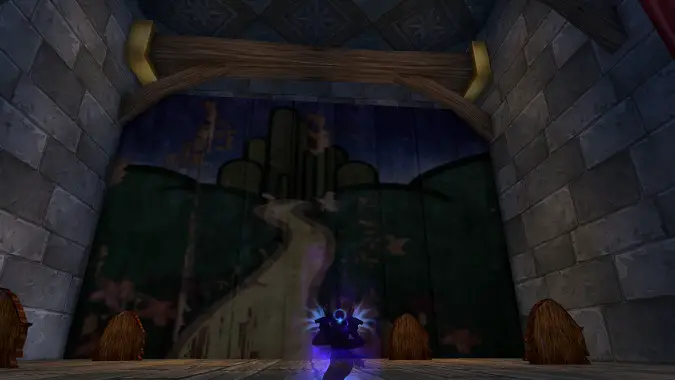
Act II: The Mana Battery
Vampiric Touch joins Shadow on stage, healers turn heads to focus on Vampiric Touch.
Burning Crusade brought new life to Shadow Priests in the form of Vampiric Touch. Added in as a level-50 talent, Vampiric Touch still caused periodic damage as it does today but with the added effect of causing 5% of all damage done to the target to be returned as mana to your party. This meant that not only did Shadow’s rotation prioritize Vampiric Touch uptime, but also that raids always wanted at least one Shadow Priest on stage with them in order to help the healing party with mana management. This led to issues of necessary raid compositions, especially during Sunwell raid progression. It also led to the term, “the hybrid tax,” which described the (what some believed to be) necessary DPS loss hybrids had as a result of their abilities to perform other roles if needed.
In addition to Vampiric Touch, Burning Crusade also brought us Shadow Word: Death and Shadowfiend. The latter originally returned mana but otherwise has not changed much over the years, while the former was originally usable at any percentage, caused triple damage below 25%, and reflected all damage done if the target was not killed. This could be especially deadly if bosses took increased damage or if a Shadow Priest used it as part of a rotation and didn’t pay attention to health. A Shadow Word: Death cast without much thought often meant an early exit (and some angry healers).
It’s interesting to note that early drafts of the Shadow talents and spells had Shadow Mend in place of Vampiric Touch as the level-50 talent and Shades of Darkness in place of Shadowfiend. Shadow Mend was essentially Flash Heal in Shadowform, but got cut likely to avoid turning Shadow into a mandatory healing spec. Shades of Darkness was similar to Shadowfiend in that it summoned three creatures to attack an enemy, but was changed in favor of a single summonable pet that had some extra utility.
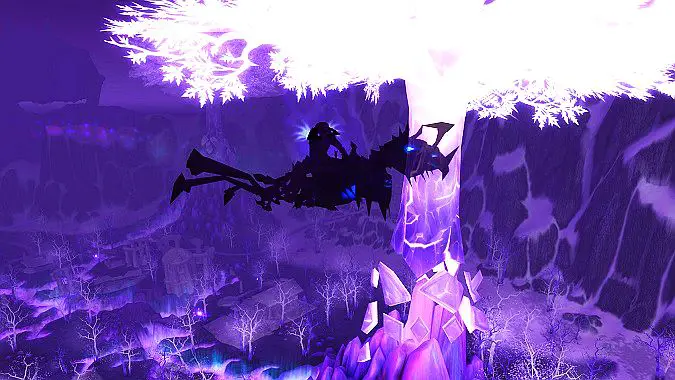
Intermission: The Homogenization
Replenishments enter from all sides, join appropriate classes.
Remember the raid composition issues I mentioned earlier? Wrath of the Lich King touted the mantra, “Bring the player, not the class” and the changes to Vampiric Touch are a great representation of that mentality. Replenishment was added to the game and given to many classes as a way of ensuring no raid went without a way to restore mana, but at the cost of some class identity. For Shadow Priests, Replenishment was gained by casting Mind Blast on a target afflicted with Vampiric Touch.
Wrath also brought Devouring Plague to all races as an additional DOT (limited to one target at a time), but removed most other race-specific Priest spells. To compensate for the added DOT, Pain and Suffering was added as a talent, causing Mind Flay ticks to refresh the duration of Shadow Word: Pain. As a result, the Wrath rotation was very similar to Burning Crusade’s: keep DOTs up, Mind Blast and Shadow Word: Death on cooldown, fill with Mind Flay. Vampiric Embrace became a passive effect, but its healing was reduced for all but the Priest.
The Wrath talents would also bring us the longest talent tiers in WoW’s history, with the final talent eight rows in. With such an expansive system, players expected the level-60 talent to be pretty game changing. Unfortunately, the final unveiling of Shadow’s 51-point talent revealed Dispersion, which was met with mixed reactions.
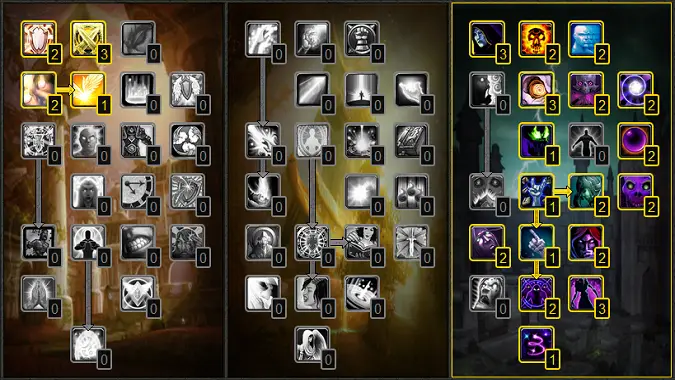
Act III: The Dark Archangel
Mastery joins classes on stage.
Cataclysm brought about the first shrinking of talent tiers back down to seven rows, and also introduced a lock-in mechanism for specs. If you chose Shadow at level 10 (and who wouldn’t?) then you automatically got Mind Flay, which was no longer a talent choice. But a smaller talent tree didn’t necessarily make for fewer spells.
Mind Flay and Shadow Word: Pain both had a chance to proc Shadow Orbs, which could then could stack up to 3 times. Each stack increased the damage of your DOTs. On top of this, Evangelism and Dark Archangel were added in the Discipline tree. Evangelism caused each Mind Flay tick to increase periodic spell damage, up to 10% total. Dark Archangel consumed this effect to restore some mana and increase Mind Flay, Mind Spike, Mind Blast, and Shadow Word: Death damage by 4% per stack consumed. On top of those changes, Shadowy Apparitions entered as a talent option. .
Cataclysm took Shadow’s familiar story beats and added some additional mechanics and cooldowns to separate the professionals from the amateurs. The idea behind the Cataclysm rotation was to take advantage of snapshotting to make sure DOTs were cast with the full effect of Empowered Shadows and Evangelism before trying to also maximize Mind Blast damage via Shadow Orbs and Dark Archangel. While that might make it sound simple, this was arguably one of the most complicated rotations in Shadow’s history.
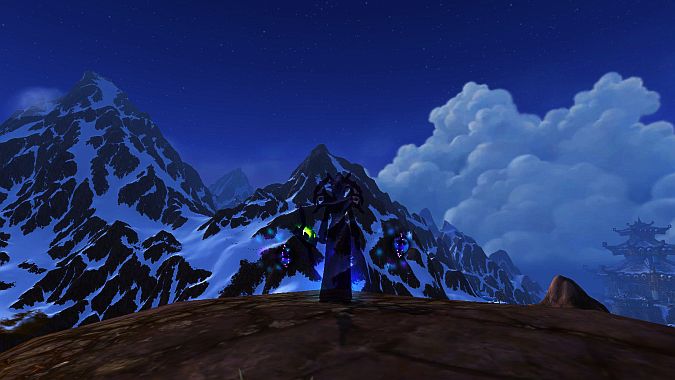
Act IV: The Orb Consumer
Shadow Orbs enter, stage right.
In Mists of Pandaria, we finally saw the arrival of the talent system used today. While some talents have changed places since Mists, most of the available options at the time would look familiar to a Shadow Priest playing today. Mists did, however, turn Shadow Orbs into a resource. After briefly being tested as a way to release Shadowy Apparitions, these were ultimately only used to cast Devouring Plague and Psychic Horror. The former was no longer limited to one target and originally consumed all Shadow Orbs with damage scaling accordingly, while the latter also consumed all orbs but had no increased effect as a result.
Shadow Orbs were gained in the same way they are today, but Mists of Pandaria was also the first time Shadow Word: Death existed purely as an execute mechanic, which reduced Orb generation outside of Execute range. Mists also revamped Vampiric Embrace pretty significantly, making it a healing cooldown more or less in place of Divine Hymn (which Shadow no longer received). In addition, the healing did not change based on party size as it does today. This made it incredibly effective for soloing, as a Vampiric Embrace/Devouring Plague combo almost always healed the Priest up to full health.
Shadow also gained some in-Shadowform utility in the form of castable Renew, Prayer of Mending, Leap of Faith, and Void Shift. Void Shift in particular could save a raid if used on a tank at the right moment. Sadly, with Blizzard’s goal of moving away from spike damage, Void Shift only lasted one expansion before meeting its untimely demise.
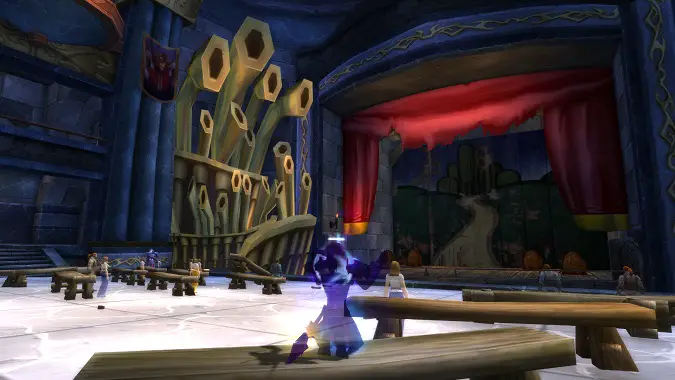
Final Act: The DOT Weaver
Level-100 talents descend from above, take place among Shadow Priests.
A more familiar story, Warlords of Draenor brought with it ability pruning. Shadow, more than ever before, became focused on pure DPS rather than hybridity. Many healing spells were removed, existing ones were nerfed, and the only support spells castable in Shadowform were now Power Word: Shield and Leap of Faith.
The level-100 talents also shifted Blizzard’s talent design in a more impactful way than before, giving Shadow Priests three different options which effectively acted as sub-specs. DOT Weaving was reviewed negatively by many Shadow Priests, while Void Entropy’s lackluster performance was lamented.
Closing Monologue: The Insane
Shadow Orbs exit, stage left. Insanity peeks out from behind curtain.
And finally, we look ahead toward Legion. We don’t really know much, but it appears Shadow will be losing Shadow Orbs as a resource and gaining “Insanity.” What this means in terms of gameplay is still entirely unknown (and even likely to change). What we do know is that Blizzard has been hard-focused on getting classes back to their fantasy roots. If history tells us anything, it’s that Shadow Priest history has seen its fair share of change — but Shadow still retains some of the abilities that make it distinct. Only time (and possibly Blizzcon) will tell if that will continue.
Until next time, always remember: the curtains may close, but the Shadows will always remain.
Please consider supporting our Patreon!
Join the Discussion
Blizzard Watch is a safe space for all readers. By leaving comments on this site you agree to follow our commenting and community guidelines.




